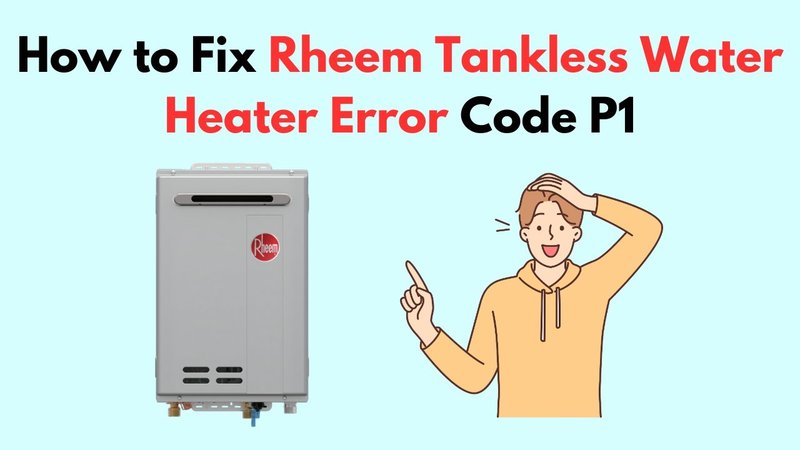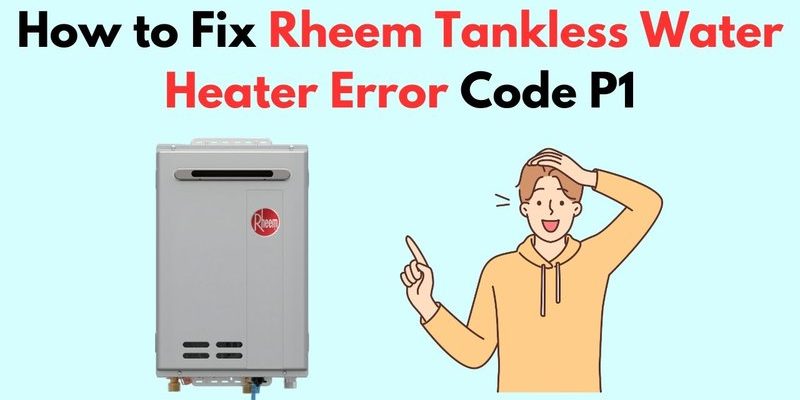
In simple terms, error code E1 on a Rheem water heater typically alerts you about an issue with the ignition system. It’s a signal that something’s off in the process that lights up the burner to heat your water. Now, before you panic and conjure up images of geysers or other plumbing disasters, let’s take a deep breath. Understanding more about this code and its implications can help you figure out how to address it safely.
Understanding Error Code E1: The Basics
Here’s the deal with the E1 code: it’s essentially your water heater’s way of communicating. Just like how your car warns you with a “check engine” light, the E1 error code is an intelligent alert system embedded in the heater’s electronics. It indicates a failure to successfully ignite the burner. This can be due to a variety of reasons, ranging from something as simple as a gas supply issue to more technical factors involving the heater’s internal components.
You might be wondering why your heater might struggle to ignite. It could be as basic as a disruption in the gas supply. For example, imagine if the gas valve was just like a faucet that’s not fully turned on — the heater won’t get enough gas flow to ignite properly. Alternatively, it might be an issue with the ignition components themselves, like a spark electrode failing to create the necessary spark. Another possibility is a blockage or an obstruction in the flue, preventing the gas from venting appropriately.
So, what should you do when facing an E1 error? The first step is not to panic. Instead, try resetting your system. Often, simply turning the heater off and then back on can clear minor glitches. However, if the error persists, it’s wise to consult the user manual or contact a professional. Attempting to open the unit without proper knowledge could void any existing warranty or, worse, pose safety risks.
Is It Safe to Keep Using Your Heater?
Now, the pressing question: is it safe to continue using your Rheem water heater after seeing an E1 error? Let’s break this down. First, it’s important to acknowledge that the error code is there for a reason — it’s like a friendly nudge telling you something isn’t right. Ignoring it might lead to inefficient heating at best, or at worst, further damage could occur over time.
Continuing to use the heater without addressing the issue may lead to increased energy consumption. Think of it as running your car with a half-flat tire. Sure, it’ll move, but not efficiently, and probably not for long without causing more problems. Additionally, if there’s an underlying gas supply issue, that might lead to safety risks, like gas leaks, which aren’t to be trifled with.
The safest course of action is to stop using the heater until you’ve identified and resolved the error. If you’re unsure how to proceed, getting in touch with a qualified technician is crucial. A professional can perform a thorough diagnosis and necessary repairs, ensuring your heater operates safely and efficiently. Plus, regular maintenance can often prevent these issues from cropping up in the first place.
Preventative Measures and Tips
So, how can you avoid seeing that pesky E1 error in the future? Like many mechanical systems, your Rheem water heater appreciates a bit of routine attention. Think of it as giving your heater a regular check-up to keep things running smoothly. Regular maintenance, just like regularly servicing your car, can catch potential issues before they become actual problems.
Schedule routine inspections with a licensed professional, who will check for any signs of wear and tear, ensuring that components like the burner, ignition system, and valves are all in optimal condition. Keep an eye out for any unusual sounds or changes in performance — these can be early indicators that something needs attention.
Moreover, consider installing a carbon monoxide detector in your home. While not specific to the E1 error, it’s a wise move whenever you have gas-powered appliances. It provides peace of mind by ensuring you’re alerted to any potential gas leaks, safeguarding your family’s well-being.
In conclusion, encountering an E1 error code on your Rheem water heater isn’t the end of the world. With a little understanding and proper action, you can resolve the issue promptly. Remember, safety first — when in doubt, always reach out to a professional for help. Your comfort and safety are worth the extra effort!
